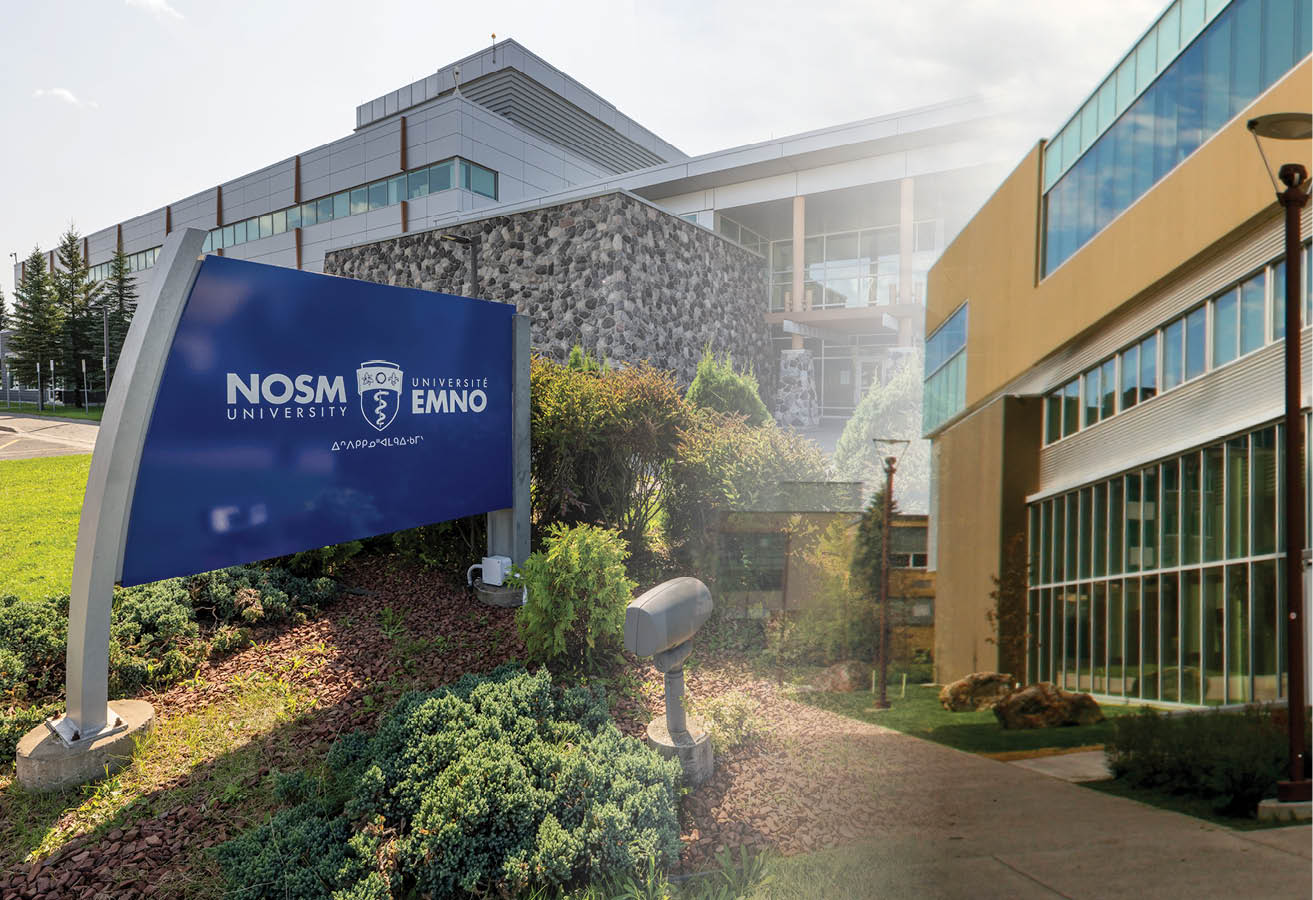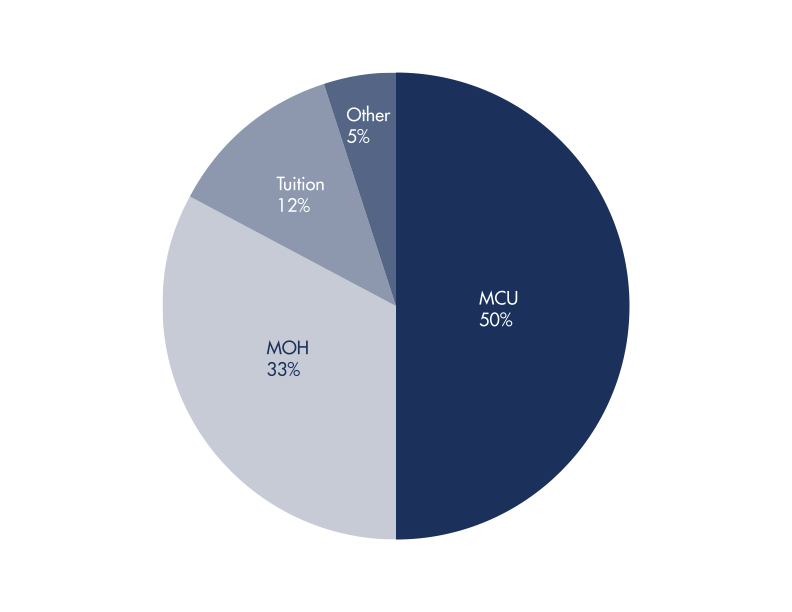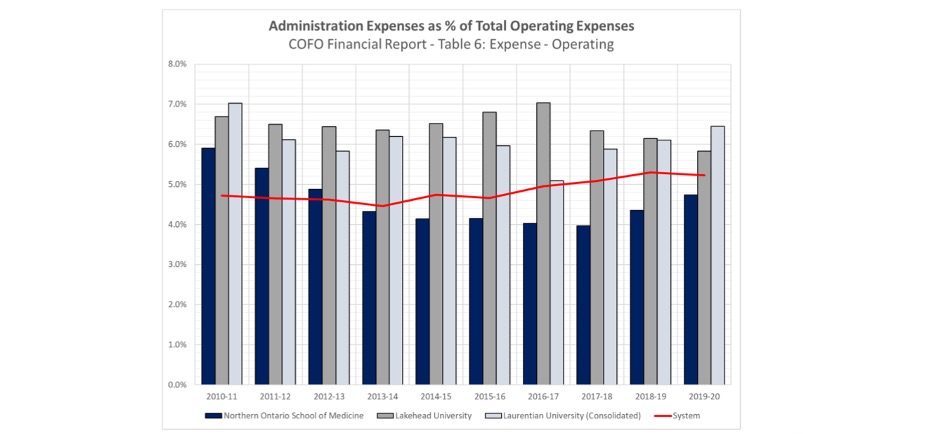Who are we?


The Northern Ontario School of Medicine (NOSM) was established in 2002 as a key government strategy to reverse the chronic physician shortage in Northern Ontario. Twenty years later, the Northern Ontario School of Medicine University Act was proclaimed into force on April 1, 2022, making us Canada’s first independent medical university—NOSM University. With a massive expansion of medical programs also announced in 2022, a new Board of Governors and Senate, plus an inaugural Chancellor, there is considerable momentum behind NOSM University, the destination of choice for people hungry for transformation in health care.
What is Our Mandate?
Northern Ontario School of Medicine University Act
Objects
- The objects of the University are,
(a) to provide undergraduate and postgraduate medical health education and other programs and, in doing so, advance the highest quality of learning, teaching, research and professionalism.
(b) to shape the medical profession and allied health services in a way that improves their responsiveness to the distinct needs of rural, remote, Indigenous and Francophone communities.
And
(c) to contribute to the advancement of healthcare in northern Ontario by facilitating student appreciation of the opportunities for quality educational and professional careers in northern Ontario.
Special Mission
2. It is the special mission of the University to provide programs that are innovative and responsive to the needs of individual students and to the unique healthcare needs of the people of northern Ontario and other northern regions of Canada, which includes people living in rural, remote, Indigenous and Francophone communities.
How are we funded?

We are mainly funded by the provincial government. In fact, 80% of university revenue is derived by a special government funding formula that was intentionally constructed in 2002 to enable NOSM University to not only create new doctors but to help recruit them to underserved areas of the North. Unlike all other universities in Ontario, NOSM University is not funded strictly through a Strategic Mandate Agreement (SMA) with the Ministry of Colleges and Universities (MCU). Instead, we receive funding from both the MCU and the Ministry of Health (MOH).
That’s because of the two distinct roles of NOSM University: foremost as a degree-granting postsecondary institution, but also as a key strategy to facilitate better physician recruitment, distribution and retention in the North.
NOSM University works closely with the MCU and MOH to ensure alignment of our institutional funding to ongoing government health-care priorities.
NOSM University Sources of Revenue

50% of funding to NOSM University comes from the Ministry of Colleges and Universities (MCU), 33% from the Ministry of Health (MOH), 12% from tuition and 5% from other sources.
Of note, NOSM University was originally created as a “government strategy” with a specific mandate to address the physician workforce needs of Northern Ontario.
Originally provided with enhanced funding recognizing the extraordinary cost of NOSM’s distributed, community-engaged learning (DCEL) medical education, it was intended to help distribute new doctors to rural/underserved areas. The NOSM model has been hugely successful. In just 15 years, new medical degree graduates and those completing residency programs have gone on to practise in Northern Ontario.
In a short time, the impact is measurable. Today, more than 400 family doctors, trained at NOSM University and working across the North, have enrolled over 400,000 Northern patients, that is half of the Northern Ontario population. To learn more about the extraordinary achievement and unique medical education model there are two books available for sale at nosmstore.ca.
Reality Check

Relying on funding from two ministries is complex. The Auditor General (AG) has filed two Value-for-Money Audits pertaining to the pressures within the MCU and MOH. First, in “Audit on the Financial Management of Ontario Universities,” the AG’s findings support the view that the financial health of the postsecondary sector is compromised by tuition freezing, underfunded capital growth, and a heavy reliance on international enrolment. Notably, those concerns have been echoed in the findings of a Blue-Ribbon Panel, “Ensuring Financial Sustainability for Ontario’s Postsecondary Sector” (March 2023).
Second, where the MOH is concerned, another AG Value-for-Money Audit (December 2023) “Hospitals in Northern Ontario: Delivery of Timely and Patient-Centered Care,” confirms that the crisis in hospital funding is also substantial. This situation affects NOSM University in that we rely heavily on both ministries for our sustainability. Without strong MCU and MOH support, our mission and our future are at risk.
1. UME Per-Learner Funding vs. Cost of Inflation
- Since 2004, undergraduate medical education per-learner funding—or weighted grant unit (WGU) —has remained the same.
- Since 2009, resident per-learner funding —or weighted grant unit (WGU)—has remained the same.
Based on the Bank of Canada Inflation Calculator, NOSM University has to absorb natural inflationary cost increases (e.g. salaries, utilities, supplies/services, licensing, $US exchange rate, etc.) without increase to its per-learner grant.
Impact of Inflation on Base Funding
Inflation Calculator |
Grant/BUI per student |
Year |
|---|---|---|
|
A “basket” of goods and services that cost: |
1. $43,300 | 2009 |
| 2. $78,979 | 2004 | |
|
… would cost: |
1. $59,707 | 2023 |
| 2. $118,618 | 2023 |
Medical education student per-learner funding vs. cost of inflation between 2004-2023


Weighted Grant Unit (WGU)

Inflation Rate

Linear (Inflation Rate)

2. In 2019, tuition was cut by 10% and has been frozen at that level since. In the absence of compensatory funding, we are hopeful that this will be revisited as part of the Blue- Ribbon Panel recommendations.
3. NOSM University’s enrolment is capped by the government and international students are mainly ineligible except through specific streams for entry to our medical programs. Our small Master of Medical Studies (MMS) program is just starting to accept international students. Any new degree growth will take 36-48 months (about four years) to put into place.
4. Essentially NOSM—now NOSM University— was purpose built to be a medical school with a controlled enrollment determined by the government. As such, unlike other universities, NOSM University is currently unable to grow its revenue through increased admissions and tuition or market its medical programs to international students. And now, with recent federal caps on international entry, this looks even more doubtful.
5. The cost of doing business has risen, in part because of inflation, but also because of new required annual expenditures since becoming NOSM University, such as:
a. Library licensing
b. Research grant administration
c. Registrar and student support costs
d. Senate and Board of Governors support
e. Building maintenance increases
6. Whereas other universities own real estate and can leverage debt financing to expand infrastructure, etc., NOSM University does not own its buildings. The NOSM University buildings on the Lakehead University and Laurentian University campuses were purpose-built and funded by the Government of Ontario. Through lease agreements, NOSM University pays a combined total of more than $3.0 million annually for overhead/services provided by the universities, such as: utilities, building and grounds maintenance, housekeeping, mechanical inspections, security, signage, research support services, and secondments. We are in a holding pattern on the Sudbury campus, awaiting the outcome of the sale of the NOSM University buildings under the CCAA plan of arrangement with Laurentian University in the hope that Infrastructure Ontario will lease or sell them to us. On the Thunder Bay campus, we continue to discuss our future in the buildings at Lakehead University for which since proclamation we have paid an occupancy rate substantially above the original $2 per year under our existing lease.
7. The anticipated expansion of NOSM University to almost double its undergraduate and postgraduate capacity over the next five years will be costly. We are facing increased pressures that must be addressed from both a health human resource and financial perspective.
Strengths

1. NOSM University’s Distributed Community Engaged Learning (DCEL) model is working. Almost 90% of learners who complete both undergraduate and postgraduate training at NOSM University remain in the North, including 28% in rural or remote communities, and more than half of the MD class has so far chosen family medicine as a career.
2. An estimated 400,000 Northern Ontarians have received primary health care from a NOSM University graduate.
3. The anticipated expansion of NOSM University to almost double its undergraduate and postgraduate capacity over the next five years will bring in added revenue and more doctors to the North.
4. NOSM University has strong support from the Northwestern Ontario Municipal Association (NOMA), the Federation of Northern Ontario Municipalities (FONOM) and communities across the region.
5. Investors are taking notice. Since May 2022, NOSM University has raised more than $24,500,000 for the NOSM University Student Endowment Fund, which offsets tuition costs for learners.
6. In 2019, the Centre for Rural and Northern Health Research (CRaNHR) estimated that NOSM University contributed an estimated $142 million in new economic activity in Northern Ontario ($2.35 multiplier on every $1 invested/spent at NOSM University). This number has only increased in the past five years.
7. Experts on the 2023 Blue-Ribbon Panel (Ensuring Financial Sustainability for Ontario’s Postsecondary Sector) have recommended that “‘one-size fits all’ government policies need flexible elements to address financial sustainability in parts of the sector with special challenges [particularly in Northern Ontario].”
8. Sustainable, strategic growth and effective long-term planning will be fully realized when a unique, streamlined funding approach for NOSM University is established.
9. Data in 2020 from the Council of Ontario Financial Officers (an affiliate of the Council of Ontario Universities) has shown that NOSM—now NOSM University—is consistently more efficient than its northern colleagues. In other words, we are lean, we are thrifty, and we save money.
Administration expenses as % of total operating expenses COFO Financial Report – Expense – Operating

Administrative Services Expenses as % of Total Operating Expenses COFO Financial Report – Expense – Operating

Fiscal Responsibility

The Finance, Audit and Risk Management Committee supports NOSM University’s Board of Governors in fulfilling its responsibilities to ensure financial and organizational viability.
The Board is responsible for:
- Establishing and monitoring financial systems, procedures and safeguards (e.g. risk management, annual audit, external reporting, compliance, etc.).
- Fostering growth and expansion while maintaining a balanced budget.
- Ensuring an effective fund-raising (advancement) strategy and Government advocacy program to ensure ongoing sustainability.
- Ensuring the organization undertakes the necessary annual financial planning for effective resource allocation.
- Approving the annual operating budget, financial policies and risk management plan.
- Ensuring key financial objectives and performance indicators are developed and monitored (including capital allocations and expenditures).
- Ensuring appropriate utilization of resources, while operating within its funding envelope.
- Approving the annual Audited Financial Statements which are completed within generally accepted Canadian auditing standards by an external auditor (currently Grant Thornton LLP).
Worth noting, the NOSM University Board of Governors maintains a “balanced budget” policy – meaning that the Operations are required to deliver a balanced budget each spring. As such, NOSM University has a reputation of “living within its means”. NOSM University does not deficit spend, does not borrow money or access reserve funds to balance.
We are proud of our ability to remain lean, and hold the line on expenditures, in these difficult times.
Expert reports, including those from Deloitte (2014/15) and the MOH (2017/18), agree that ours is a structural deficit issue requiring an increase in annual base funding.
NOSM University requires an immediate increase of $4 million in government base funding to sustain its highly successful distributed model.
A New Model for Prosperity

Despite NOSM University’s per learner WGUs being frozen at 2004 and 2009 levels, NOSM University has had to absorb inflationary and other cost pressures such as:
- technology and software licenses;
- rising utility costs;
- apartment rental costs (for distributed model);
- USD$ for some of our software, services and library licenses;
- library collection maintenance; and,
- salary increases from union collective bargaining.
Despite these pressures, NOSM University has been able to reduce its operating expenses, each year, as a percentage of budget (excluding salaries/benefits) by achieving ongoing operating efficiencies. With the Board’s “balanced budget policy,” NOSM University has balanced its budget over the past decade by:
- identifying and implementing ongoing operational improvements and efficiencies;
- deferring essential expenditures;
- keeping key positions vacant (creating HR pressures – affecting staff morale/stability);
- reducing travel between the universities and other teaching sites; and,
- receiving one-time/bridge funding by both MOH and MCU.
Conclusion

NOSM University is crucial to solving the health human resource crisis in Northern Ontario. With the government’s recent commitment to increase MD and residency spaces in the North, there is much optimism that we will be able to meet the physician workforce needs of the future. However, this growth and ability to deliver is constrained by the urgent need for an additional $4 million in base funding.
NOSM University stands on stable financial management and best practices. As we evolve, we will seek a predictable, long-term plan of government funding that acknowledges our unique dual-ministry status and distributed model, one which removes our decade-old structural deficit, and one that catalyzes innovation.
With a modest injection of $4 million to our annual base funding, NOSM University has an unprecedented opportunity to focus on becoming a precinct for innovation and a place for investment, where new partnerships generate not only revenue, but ideally local solutions that are directly linked to societal need.
NOSM University is at the forefront of a movement defined by the ecological university that relies heavily on outputs and measuring the impact on the community it serves. We can—and indeed, must— become that “ecological university,” one that is defined by a transformative model of education and ever more deeply and ethically networked with the societal ecosystem around us. Read more about this vision in “From Informative to Transformative: The NOSM University of Tomorrow.”
NOSM University is unlike any other. Ours is a future-facing model that will inform best practices at like-minded institutions across the country—and beyond.
NOSM University is truly unparalleled.
Join us on the road to sustainability and a new way of doing business.


